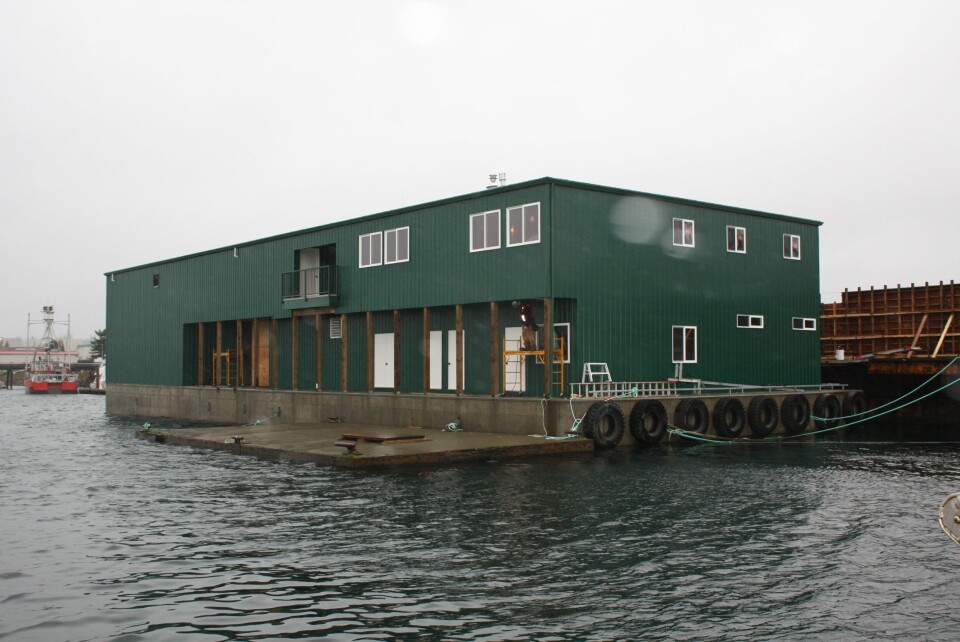
MH gears up for growth
“The outlook for the salmon farming industry looks very favourable for the medium and long term due to modest supply growth”, states Marine Harvest in the company’s last quarterly report. And the short-term growth of the company’s production in British Columbia will be reduced by about 1,500 tonnes of Atlantic salmon due to a loss of “up to 280,000 fish of an average size of 4.1 kg” due to an unusual bloom of harmful algae at a farm site near Port Hardy, where such blooms have not been common. But the business of salmon farming is one with long term plans, and last month saw the arrival in Campbell River of a 650 m3 well boat from Norway - chartered by Marine Harvest for a number of specific jobs, and also to replace the aging “Salmon Transporter”.
A second, newly built harvest boat will arrive in Campbell River from Vancouver later this week (more about the “Amarissa Joye” tomorrow). Also nearing completion is a unique new barge that’s being built in Campbell River for Marine Harvest, which provided the following details in its latest newsletter.
The first ever purpose-built house and feed storage shed (made to accommodate two farms - Ed. note) is currently being constructed in Campbell River. The impressive structure, built by Pacific Float, will be a welcome addition to the Port Hardy area when it arrives on site later this year. The comfortable staff accommodation and fish feed storage unit is 38.8 metres long, 15.2 metres wide, and can hold up to 380 tonnes of fish feed. As the unit will be shared between two sites – Bell and Duncan – the large amount of feed storage will be critical to the operations.
The second story living accommodations boasts six bedrooms, spacious living area, kitchen, laboratory, and washrooms. Laundry facilities are also included. To ensure minimal use of diesel fuel required to run the generator at feeding time, a battery invertor system will supply all electrical needs in the mornings and evenings.
The barge will be housed at the Bell Island tenure, but will also act as a mustering point and feed storage for the nearby Duncan site. An AKVA feeding system will distribute feed to fish at Bell, while feed boats will load up with feed before departing for Duncan. Both sites will monitor feed delivery with surface and underwater cameras, and can be viewed at the cage or within the comfort of the accommodation and feed boats.
The building’s design has considered the company’s strict biosecurity protocols, especially important as the single unit will service both Bell and Duncan sites. This simply means the farming activities of each site will not come into contact with each other. Port Hardy’s production manager, Darren Ingersoll, is very excited to have the new addition to his area. “This will be the first specially designed house built to accommodate two farms,” says Darren. “It will feed one site by a state of the art feeding system, while also serving as a home base for Duncan Island.”





















































